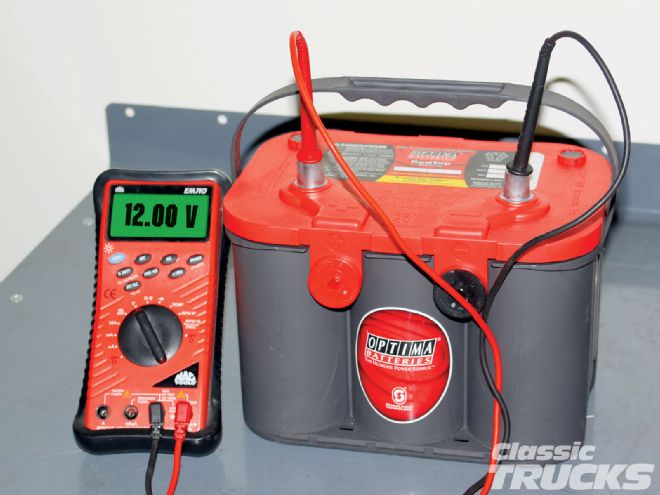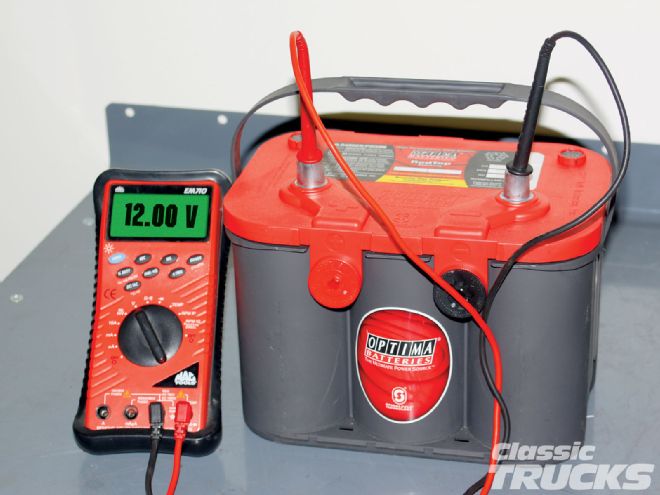
For two reasons, I wanted to write a piece on basic electrical theory. One is that everyone understands what a battery does but oftentimes becomes confused about the components connected to the battery, e.g. the starter and the alternator. The second reason is to teach you how to test these components either at home or on the road. If you already know about electrical keep reading-you may learn something or better yet remember something you might have forgotten.
 First you need to test for voltage. Using a voltmeter with the red lead on positive and the black lead on negative check for no less than 12 V. With any less than 12 V consider putting the battery on a low amp charger; then retest if it has been sitting for a while.
First you need to test for voltage. Using a voltmeter with the red lead on positive and the black lead on negative check for no less than 12 V. With any less than 12 V consider putting the battery on a low amp charger; then retest if it has been sitting for a while.
In order to test any of these components you need a little understanding of what electricity does. I will only go into three basic measurements of electricity: voltage, current, and resistance. Voltage is measured in volts, current is measured in amps, and resistance is measured in Ohms. If you think about it in plumbing terms voltage would be the amount of water pressure, current would be how much was flowing in the pipe, and resistance is how big or small the pipe is. The way that voltage works in a 12V automotive system is very similar to the plumbing terms. The source of voltage is the 12V battery in the vehicle, or in plumbing terms the water tower. When the battery is charged it will have voltage or force that can push the electrons out; like a water tower full of water has a lot of pressure (voltage).
Current is the amount of electrons that are coming out of the battery and going into the wires, starter, load, and more. Let's say the water tower has a hose attached to it; current would be the volume of water coming from the hose. Measuring amps would depend on the voltage and resistance. The amperage measurement in water terms would depend on the water tower size and how big the hose was.
When writing about resistance it is easy to use the terms conductor and insulator. A conductor will let electricity flow through it and an insulator will not allow any current to pass through. Resistance could be described in several scenarios and has many ways that it can cause a lack of flow. A rusty surface acts like an insulator and will cause high resistance. On the other hand, a clean metal surface will conduct electricity and cause very little, if not zero resistance. A scenario I always remember is a fireman trying to put out a fire using a garden hose instead of a fire hose. Think of a battery trying to deliver 12 V to a starter, but the wires were very small and could only get a small amount of voltage to the starter. Resistance can be found in battery cables, terminal ends, rust, paint, and plastic, just to name a few.
The battery is at the heart of the system, without it nothing works and depending on what vehicle you have you could have 6 or 12 V. So that we are all on the same page I will only go into 12V systems. A bad battery and starter could be quite deceptive when testing, so here are some helpful tips on how to diagnose your system.